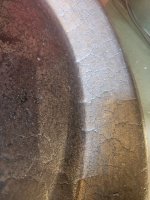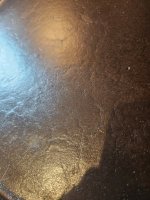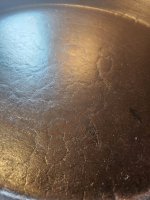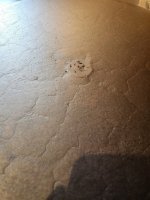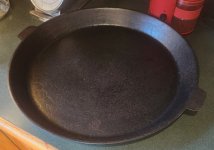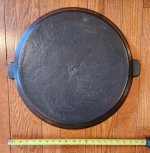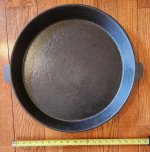Hello, everyone!
New here... Great site! Wow!
Lend a hand with identifying my most recent auction find?
A large, round skillet with two tab/ear handles... 16" across the cooking surface, 18" rim-to-rim, and 20" handle-to-handle...
Sharp edges... And heavy!
Has an unusual texture on all surfaces... Almost looks like alligator skin... and has a very pronounced quai-gate mark... Pictures atta hed...
Any information would be greatly appreciated!
Looking forward to contributing!
Thanks so much!
RS
New here... Great site! Wow!
Lend a hand with identifying my most recent auction find?
A large, round skillet with two tab/ear handles... 16" across the cooking surface, 18" rim-to-rim, and 20" handle-to-handle...
Sharp edges... And heavy!
Has an unusual texture on all surfaces... Almost looks like alligator skin... and has a very pronounced quai-gate mark... Pictures atta hed...
Any information would be greatly appreciated!
Looking forward to contributing!
Thanks so much!
RS

